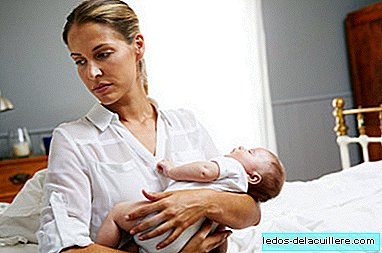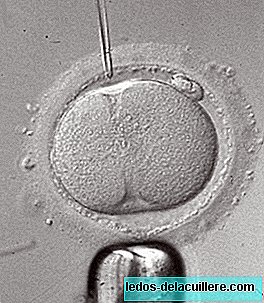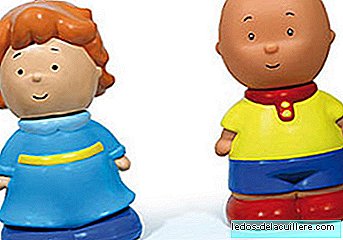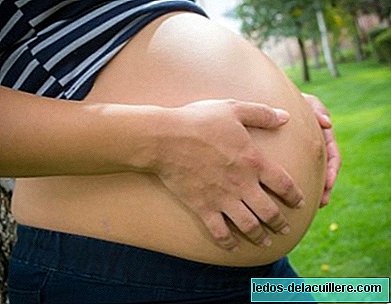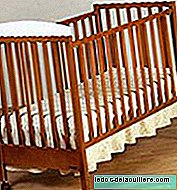Carry our baby from birth and continue to do so until carrier and child decide, It is one of the most beautiful experiences of motherhood. In addition, the portage has innumerable advantages for the baby, since it helps him calm down by being in direct skin-to-skin contact, relieves reflux and cramping symptoms, or even prevents plagiocephaly and hip dysplasia.
But for the porter to have only positive benefits in the child (and also in the carrier) it is necessary that this be respectful and ergonomic, something that unfortunately is not achieved with all the baby carriers or backpacks that we can find in the market.
Today we tell you how can you know if you are, or not, before an ergonomic baby carrier, and what are the main characteristics that you must take into account when purchasing a backpack that respects the physiognomy of the baby and the carrier.
Why no backpack is good, and the fact of acquiring it in a large area, seeing it advertised on television or being used by a celebrity It is not a guarantee of ergonomic porting.
The most recommended is always go to specialized stores and be advised by porting professionals. But while, these are the features you should keep in mind when buying an ergonomic backpack:
The legs should go in position M or "frog"
Inside the mother's womb, babies are completely shrunk and with their legs flexed, and when they are born keep the column arched naturally for a long time.
This is something that we can easily observe when we take a newborn or a few-week-old baby into our arms, put it face down on our chest, or place it face up on the bed.
This natural posture that they themselves adopt, with the C-shaped back and raising their knees above the culete, is what an ergonomic baby carrier must respect.This position, which we call "frog", It is not possible with the use of a non-ergonomic backpack, because in them the baby is "hung" on his genitals and with the legs stretched, damaging the correct development of his back and hip.
Therefore, and attending to this point, an ergonomic backpack is one that:
- Let us place our baby with legs apart and without being forced,
- knees bent at the same height as the ass - or slightly higher -
- and not force him to straighten his back.
 Via International HipDisplasia Institute
Via International HipDisplasia Institute But beware, because the porters advise that the fact that the baby is wearing the legs in a frog position does not necessarily mean that the backpack is ergonomic, since many of them do not have a bridge wide enough to allow proper opening of the legs beyond the first months of life. So as the baby grows, his legs are stretched more and more until they literally end up "hanging."
In this portage website we are advised to look at the bridge of the backpack that separates the two legs: a wide bridge will favor the frog position, but a narrow bridge of 10 or 15 cm is not enough to ensure ergonomic porting.
The backpack must fit the baby
The surprise that a newborn baby needs is not the same as a multi-month-old baby who is already standing upright, or even a young child. Little by little, the baby will stop being hunched over, it will lose the characteristic "C" shape of its back and its pelvis will open causing greater leg opening.
It is important that the backpack respect the child's natural evolution and do not force him to take positions for which he is not prepared. Some backpacks are evolutionary and grow with the child, but others are indicated exclusively for a certain period of time.
Therefore, if we want to carry our child but we do not have experience with the use of baby carriers, the most recommended is consult with a specialized portage consultant, since not all backpacks (even if they are ergonomic), are suitable for the newborn.
Stick to you, at the height of your kisses
Another of the main features that an ergonomic backpack should have is skin-to-skin contact between carrier and baby, with nothing that prevents or makes it difficult to look your child in the eye when you carry in front, caress or just kiss him with bowing your head.

In addition, the baby's head should never be above our chin, as this interferes with our viewing angle and could cause us to fall while walking, nor below the chest. If we carry on the back, the baby should be as high as possible to have better control.
So that, if our baby's head is so low that it prevents us from kissing him crouching our chin, either the backpack we carry is not ergonomic, or it is, but it is not properly adjusted.
Soft and flexible fabric
Ergonomic baby carriers and backpacks should adapt to the baby as if it were a glove, without buttresses, zippers, snaps or rigid structures that touch your body and may bother you or hinder your natural position.
Thus, the fabric of the ergonomic backpack must be soft, enveloping and flexible, which completely covers your back and does not press you.Respect the physiognomy of the carrier
But in addition to softness and flexibility for the baby, The ergonomic backpack must be respectful to the carrier and do not wear brooches, brackets or straps that stick in the back, shoulders or lower back.
Similarly, the carrier must be able to put on and take off the backpack without help in a simple gesture, as well as adjust the straps and straps regardless of their physiognomy and height. And it is frequent that non-ergonomic backpacks do not adapt to the body of the carrier, preventing a correct and comfortable adjustment.
On the other hand, the baby's weight should be distributed more or less equitably between shoulders, back and hips, since the more and better the weight is distributed, the more comfortable and pleasant the porting will be.
Head restraint
But in addition to allowing the baby to keep the "C" shape of his back thanks to its soft and flexible fabric, the ergonomic backpack also you must hold your head, providing a wraparound support when necessary (that is, in cases where you still do not keep the head, or fall asleep and need support).
 Via Boba.com
Via Boba.com They do not allow to place the baby in front
An ergonomic backpack should never give the option of placing the baby facing the world. This is perhaps the premise that can make us recognize quickly and easily whether we are facing an ergonomic baby carrier or not.
When a baby is placed in the backpack looking out, we are forcing him to lose the natural position of his back, to support all his weight on the genitals and to force an exaggerated curvature in his lumbar region.In addition, the baby loses eye contact with his attachment figure (does not see us, does not know that we are), does not have proper support in his head, overstimulates and finds no refuge if he is afraid, anxious or simply wants to sleep.
Thus, regardless of the child's age and the way we decide to behave (front, back or hip), an ergonomic baby carrier should not allow us to place our child facing forward.

And again, experts in ergonomic portage warn of some backpacks that are sold as "ergonomic" without being, but that can confuse the buyer. These types of backpacks show portraits with small babies looking inwards, but when the child is somewhat older they allow the option of placing him facing outward.
So, let's forget the advice of the people who urge us to place our son in front "so you don't get bored" or "see the world". With an ergonomic backpack our son will be ported respectfully with your physiognomy and you can see the world equally from both sides.
We hope you find these tips useful when choosing a ergonomic baby carrier. And remember that in case of doubt, no one better than a porting expert to advise you the best option in your case.


